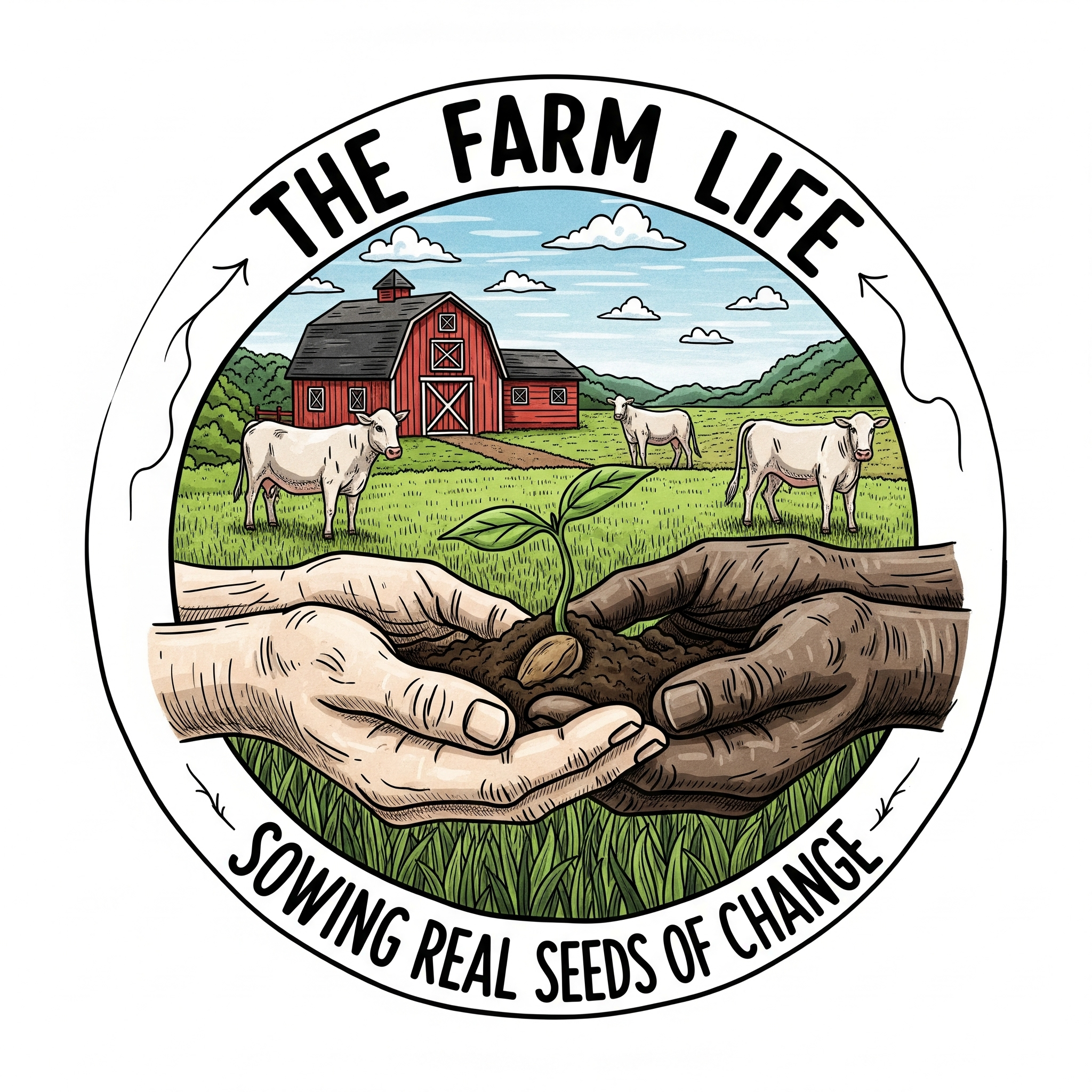At The Farm Life, we honor the time-tested traditions of growing our own food while embracing smart and sustainable methods that make gardening more accessible to all. One such method is straw bale gardening—a centuries-old technique that’s making a strong comeback among homesteaders, urban growers, and rural gardeners alike.
Whether you’re working with hard clay soil, limited space, or just want a raised alternative to bending and digging, straw bale gardening is a beautiful blend of old wisdom and new practicality.
🌾 What Is Straw Bale Gardening?
Straw bale gardening uses decomposing bales of straw as a nutrient-rich base for planting vegetables, herbs, or flowers. As the bales break down, they create a fertile, raised bed environment that warms quickly, drains well, and is easy to maintain.
Unlike hay, which often contains seeds, straw is cleaner—typically made from the leftover stalks of wheat, oats, or barley.
🌱 Why Choose Straw Bale Gardening?
1. No Tilling Required
Perfect for folks dealing with tough or compacted soil (like clay), straw bale gardening skips the backbreaking prep work.
2. Naturally Raised Beds
The height of the bales makes gardening easier on the back and knees, ideal for elders or those with physical limitations.
3. Extended Growing Season
The internal heat generated during decomposition helps seedlings grow faster, giving you a jump on spring or fall planting.
4. Excellent Drainage
No soggy roots here! The loose structure of the straw promotes strong, healthy root development.
5. Ideal for Teaching and Community Gardens
Straw bale gardens offer a hands-on learning experience for all ages—making them perfect for workshops and school programs at The Farm Life.
🌾 How to Get Started
Step 1: Gather Your Supplies
- Straw bales (not hay!) – each bale becomes one raised bed
- Fertilizer – organic compost, fish emulsion, or blood meal
- Water source
- Seeds or seedlings
- Optional: garden gloves, tomato cages, or trellises
Step 2: Condition the Bales (10–14 Days)
To begin the composting process, you’ll need to “cook” the inside of your bale:
- Days 1–6: Water bales thoroughly each day to soak them through.
- Days 7–10: Add nitrogen-rich fertilizer every other day, then water well. This activates decomposition inside the bale.
- Days 11–14: Let the bales rest and cool down. Once the center feels warm—but not hot—you’re ready to plant!
Step 3: Plant Your Garden
- For seeds, place compost or potting mix into a trench on top of the bale and sow your seeds there.
- For seedlings, dig a small hole directly into the straw and plant them as you would in soil.
🥕 What Grows Well in a Straw Bale?
You can grow just about anything! Try:
- Tomatoes, peppers, and squash
- Beans, peas, and cucumbers (train them up a trellis!)
- Herbs like basil, parsley, and dill
- Lettuce, kale, and spinach
Root crops like carrots or potatoes are possible, though results may vary depending on how tightly packed your bales are.
🌞 Tips from The Farm Life
- Water often: Straw dries out faster than traditional soil beds.
- Support tall plants: Use stakes or cages for tomatoes and peppers.
- Use mulch: Placing mulch or a tarp underneath helps deter weeds and keeps moisture in.
- Reuse or compost: At the end of the season, use the broken-down straw as mulch or compost for next year’s garden!
🌻 Final Thoughts
Straw bale gardening is more than just a clever way to grow—it’s a reminder that nature gives us everything we need. With just a little preparation, a few bales, and a patch of sun, anyone can grow fresh food—whether you’re on a full farm or a backyard plot.
At The Farm Life, we encourage you to try this method, especially if you’re looking to involve children, elders, or first-time gardeners. It’s a humble, productive, and joyful way to grow together.

Founder/CEO –At Harvesting Change & The Farm Life, our mission is to sow real seeds of change by nurturing a hands-on, inclusive learning environment rooted in sustainable farming, community connection, and traditional wisdom rooted in equity, sustainability, and social justice. We cultivate more than just gardens—we grow knowledge, resilience, and relationships that nourish people of all races, genders, and ages and the land alike.
